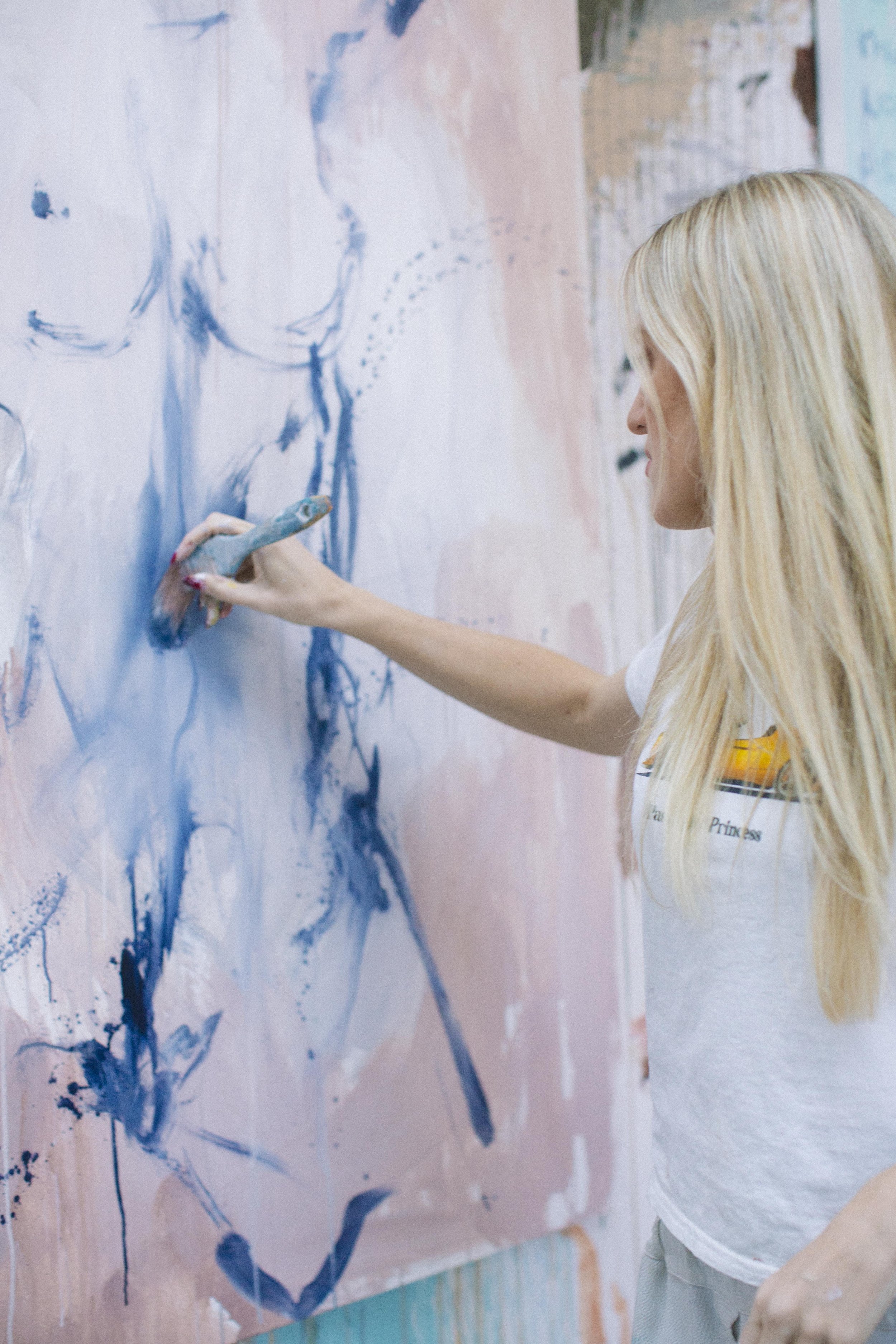Of all the creative industries, fine art holds the reputation for being the most difficult to break into. When did the canvas become a brick wall? When did oil paints first get used to ward off independent and working-class talent? In conversation with Sophie Tea Art, Original Magazine wants to blend the rigid colours of the art world in the hopes of discovering a new favourite shade:
O.M: When did you first take the plunge into the world of fine art?
Sophie: I’ve always (probably from naivety) had the mindset that I could do art full-time. That comes from a place of privilege in the sense that I always knew that if it did go tits up, I could move back in with Mum and Dad. I think there’s nothing more motivating, as a 21-year-old, than knowing you’d have to move back in with Mum and Dad if it all went wrong.
I did business at uni, and you know that final trip you take before going into a job? I went to India. I remember there was loads of graffiti on this wall at a hostel I was staying in. I was running out of money, so I just asked the hostel manager if I could paint in return for a free stay. I hadn’t painted since I was at school! I fell in love with it.
I remember emailing the grad scheme I had lined up (I was going to be a technical consultant at a software firm, lol) and telling them I was going to become an artist. They didn’t care – they had someone else lined up anyway. I posted the painting I did in India on Facebook, and my friends went, “Ah, Soph, I didn’t realise you could paint.” I replied, “Ah, yeah, if you’d like one, let me know.”
O.M: With no prior experience in the art world, how did you begin to make money from your talent?
Sophie: I spent about the first three years of my career painting dogs and other animals. I always say to artists: if you’re just starting out and want to get quick, easy money while learning, paint animals. There’s always a demand for it.
After a couple of years, I set up an Instagram. I think I was about a year too late. I bought my first 10,000 followers. I remember flipping my tone to, “I’m an expert now.” I believe that was the most important thing I did.
O.M: How do you respond to the idea that searching for a career in the arts is brave?
Sophie: It’s a delusional mentality. I do think that at every single point, I genuinely thought what I was painting at the time was amazing.
Do you know what I always respect, more than anything? The people who have corporate lives and then decide later in life that they’re going to be a creative. I think there’s so much more courage in that. Your brain’s a bit more cooked, and you’re used to a certain lifestyle – I think I didn’t have much to lose at 21, so it wasn’t a risk. I was like, “I’m going to be poor anyway, so I may as well be poor and a painter too.”


O.M: Creative jobs are inherently tied to business. As you’ve continued to develop, did you struggle to balance the professional and personal sides of selling your own art?
Sophie: About a year ago, I had fifteen people working for the business. With business, you need plans, and in the last year, I’ve massively scaled back because I realised, I was just mass-producing art.
It became a bit overwhelming for me, and I was being removed further and further away from why I started. It was a huge ego thing. Stripping back was the hardest thing I’ve ever done, to be honest. You only ever want growth. Having the maturity to go, “What you’re building right now doesn’t align with your core values,” was more hard work than it should’ve been.
I was poor for five years, then COVID happened, then it plateaued. Hopefully, we’re going up again now, but that’s an artist’s life, isn’t it?
O.M: How do you protect yourself in such an opinionated career path? Similarly, how do you stay motivated to create even when you aren’t receiving positive feedback?
Sophie: The biggest thing for me is painting. If I can find a way to paint, I can get my energy back. I do know that emotional regulation is the key to long-term success. When your hobby becomes your work, you’ve got to be very careful.
It would’ve been so easy to release a million T-shirts, but I want to prioritise my mental health and bring it back to the women. I stopped doing the sales stuff on social media and started the Charity Shop Friday project as something fun that got me engaged again. It’s ticking so many boxes for me: shining a light on already fantastic causes, having the creativity to paint random objects, getting people back on the high street, focusing on re-buying stuff, and getting to meet everyone.
I don’t normally get to see people who’ve bought my stuff or hear their stories, but recently, I’ve been connecting and collaborating with people constantly.
Massive thanks to Sophie Tea for taking the time to speak with O.M. Full disclosure, there will be another feature with Sophie Tea coming soon 👀! To see more of Tea’s art head over to the links below.
Interview By: Anya Duncan
Images By: Emily-Grace
sophieteaart.com
@sophieteaart



